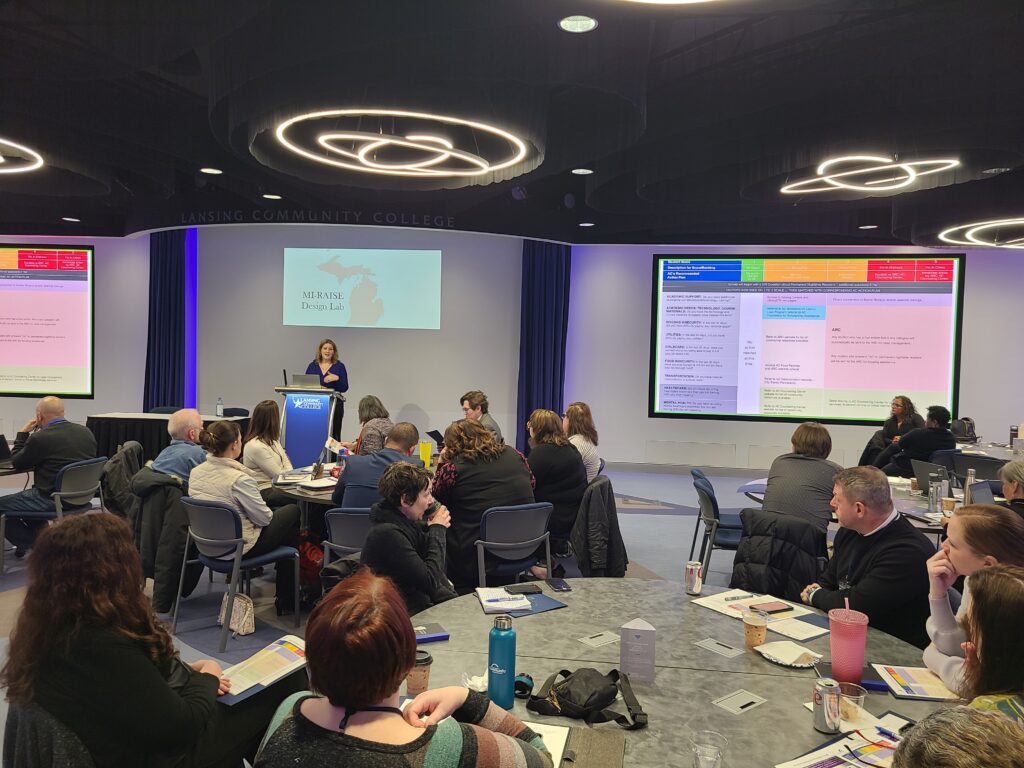The first blog in this series Help Wanted: Make it easier to fill jobs or get left behind provided recommendations for the hiring process. Let’s shift focus for round two and review how investing in employees, specifically by creating paths to new opportunities, increases retention and attracts candidates to your organization.
I was at an event the other day and a question was asked to the audience, “What do you need from employers?” with the first response being “Career pathways to get ahead of automation.” Not all pathways are tied to automation, but all should be tied to hope. Hope that a person can advance to the next rung on a career ladder, in some cases hope to lift out of poverty, or in others the hope to reach for a job never imagined. Developing and promoting career paths engages a workforce, grants a unique value proposition to offer candidates, and closes talent gaps that are hurting quality, safety, and the bottom line.
Leaders get off track — including me — since designing pathways can be complex. I’ve been fortunate to work with many smart minds that help me think through missteps and plan for ways to improve future iterations. When the Great Resignation stares you in the eye, don’t blink. Instead, stare back and use it as a reason to be better.
Lesson 1 – Construct a solid foundation
It’s important to come out strong when establishing career pathway options, as people have excellent recall for first impressions. People also have an excellent sense for shaky corporate initiatives, which is why commitment is necessary from the start. Establishing a solid foundation for your organization’s talent strategy requires two critical elements: vision and resources.
- Think big – Investment is the key accelerator to talent management. Investment in your current workforce, clear and concise strategies to develop your future workforce, and your relationship with community-based organizations that will build bridges to your organization. One team building bridges is the West Michigan Hispanic Chamber of Commerce, who is helping close the talent gap by cultivating a Latino pipeline through internships and professional development. It’s essential for employers to invest in innovations like this as pathways aren’t limited to your four walls. I’ve found Talent Acquisition teams have a unique view that triangulates community, workforce, and opportunity. Take advantage of that view to craft a vision and become an embedded advisor to the C-Suite.
- Secure resources – Ensure you have a pledge from senior leaders that allows the appropriate prioritization and financing. “Eric, budgets are tight”, I hear you, but help is out there. Many states have funds dedicated to training, developing, and retaining current employees. The State of Michigan serves as an example of this through their Sixty by 30 goal, which pays for in-demand skill development. “Eric, I am not sure how to start”, I have good news, associations like MichiganWorks! are available to navigate funding options and contribute ideas on how to best utilize these resources which could include apprenticeships, tuition support and other paths to skill development. Traditional barriers become easier to break through when you have capital to help prove your concepts.
Lesson 2 – Seek to understand
You must walk alongside your customer rather than assume you know best. For example, if I am craving a Big Mac from McDonald’s but was served a Filet-O-Fish because the worker thought it was a better choice, I’d head to Wendy’s. The same principle applies to talent strategies. The key is to co-create a pathway that meets both the goals of the employee and the needs of the organization, while identifying and resolving barriers to advancement that might prevent an individual from upskilling. Keep in mind that you might not be the best person to tackle every barrier, so identify the issues you can resolve internally and look externally for partners to alleviate the rest.
- Solve the actual problem – Check within your ranks and determine why more employees aren’t advancing naturally. Listen to them and be prepared to hear that not everyone wants to advance. For those that do, several obstacles could be preventing their progress. Is it bias within your current promotional process that is ruling them out, competencies that need to be developed, or the lack of “free” time needed to complete training to grow their skillset on top of already busy schedules? Earn while you learn models are an effective way to help balance workload. Paying someone to upskill as part of their job is not only engaging, but also a perk that is ultra-attractive to candidates looking to join the team.
- Leverage partnerships – Do what you are good at and let others do the same. If looking to understand different populations within your workforce, connect with community partners that support them and leverage their expertise. When working with a partner ask for feedback, be authentic, and establish trust. Specific ways to cultivate the relationship include consistent participation, membership on boards, and aligned incentives between the teams. An example of this is Spectrum Health’s collaboration with the Literacy Center of West Michigan around English language education. Through this effort individuals are hitting personal and professional development goals. A win for all involved.
Lesson 3 – Share a press release
If a press release was written about pathway work within your organization, would it bring pride and have depth tied to outcomes? Never waiver on this answer needing to be ‘Yes!’.
- Positive ROI – One goal should be sustainability. A brief example on how a career pathway can sustain. The problem – There is a shortage of front-line staff and widget makers within your region. The pathway – Post jobs that are X% front line work and X% training based for widget making. The outcome – an increase in candidates for your front-line roles, an in-house widget maker pipeline, and leaders lining up to fund this method due to the return being realized. Do this and you’ve become an investor, investing in people, and raising the tide for all. Successful investors have an innate ability to identify value, which is why persistent questioning of the value created is an approach that helps lead to meaningful outcomes.
- Tell your story – The benefits that come from investing in who you’ve already hired are very real. One of the smart minds I mentioned earlier likes to share that the pathway work done today directly helps children because bringing upward trajectory and wealth to a household has ripples beyond what most will see. Ripples that could including stability, self-worth, a path to the C-Suite and forever changing a family’s dynamic. At the center of a pathway is always a person, one with passion, scars, talent, and someone it’s vital you listen to and support. Storytelling is a timeless art, be intentional about sharing your experiences and learning from the stories of others as it can spur momentum to elevate entire communities.
Future Blog Posts
This is part two in a series of three blogs. The final one will highlight ways to build around diversity, equity, and inclusion and be published before the new year. As one day turns to the next, there is no better time to refresh your hiring, onboarding, and retention blueprint than now.
Connect
What are some things you are doing to invest? Let us know on Twitter.
Check out Talent 2025’s Issue Spotlight on identifying new sources of talent on YouTube.
Connect on LinkedIn. Learn more about Spectrum Health.
{{cta(‘be643ac7-73e2-40f6-a7b2-7c5927924bf4′,’justifycenter’)}}


